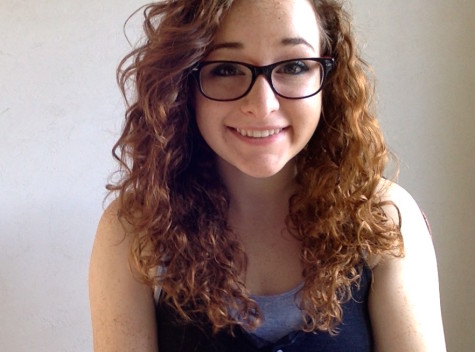Campus quiet as Cleveland protests
City demands police accountability following shooting of 12-year-old
December 5, 2014
They say there are two Clevelands. The white-collar university and downtown areas and the blue collar residential areas, where the people who make the city run live. The Nov. 22 shooting of 12-year-old Tamir Rice blurred the lines between the two, but with the hustle and bustle of Case Western Reserve University’s finals week, the outrage got lost.
Rice was killed by a Cleveland police officer who mistook the airsoft gun he was carrying for a real weapon. His death, one in a series of incidents of police brutality across the country, sparked a series of protests across the city.
The day after the shooting, members of the CWRU African American Society organized a gathering outside of the Thwing Center to honor Rice and Michael Brown, an 18-year-old unarmed black man who was shot on Aug. 9 in Ferguson, MO. After four and a half minutes of silence (to remember the four and a half hours that Brown lay dead on the ground), the group of twenty students shared their thoughts on the events.
“It was very quiet, but there was a lot of tension and frustration,” said Destinee Henton, president of AfroAm.
Afterwards, they sat down on the couches in the Thwing lobby to talk about what they were planning to do. They talked about the death of 37-year-old Tanisha Anderson, a mentally ill woman who died in police custody in November. They talked about the 137 shots fired by 13 police officers during a high speed chase after an unarmed man and woman in November of 2012. They talked about how these events were largely overlooked on the CWRU campus.
“We want to lead a campaign that shows people that these are real people, that this could be a Case student,” said Henton. “These are our family members because they are in our community.”
***
Freshman Eva Barrett grew up in the same neighborhood as Tamir Rice. She sees eleven and twelve year olds walking down her street, kids who all could have been Tamir Rice. She could have been Tamir Rice.
Barrett, who has been involved with AfroAm’s #webelonghere movement on campus, was one of a few hundred people who took to Public Square on Nov. 25 to rally for increased transparency following the Rice shooting. Following the protest, she attended a town hall meeting where she listened to the police chief and the mayor make promises that she didn’t think they would keep.
“It was more of a community blowing off steam,” she said. “People brought up questions, but it felt like [the police chief and the mayor] were beating around the bush.”
The weekend following the town hall meeting was spent crammed into a bookstore basement with members of the New Abolitionist Association and the Children’s Defense Fund-Ohio, laying out their demands for the reformation of the police department.
Barrett, along with many other writers, helped to create poems that matched the demands.
“Our goal was to make the technical terms in the demands relatable and empathetic,” said Barrett. “The role of the poets is to take something that a lot of people put in technical terms and legal-ese and make it concrete.”
On Dec. 1, the group gathered gathered at City Hall, standing up and interrupting a city council meeting to list their demands, which included greater transparency through body cameras and more citizen involvement in dealing with police brutality. Each demand was followed by the reading of a poem.
“If these demands are not exacted, you will forfeit your right to govern,” they ended, giving the City Council seven days to respond to their demands.
The twelve interrupters, which included Henton and Barrett, were escorted out quickly after they finished listing their demands, even though Barrett says their actions were legal. They joined the 150 protesters who stood on the City Hall steps.
“We marched around downtown and claimed the streets,” said Henton.
The city and the nation are currently in the process of implementing body cameras for police officers, with Cleveland’s expected to be finished by the end of the first quarter of 2015. After the protesters were escorted out, some of the members of the City Council condemned the shooting, calling it an “unacceptable, unexplainable mistake.”
***
While the city came together, CWRU remained fairly quiet.
“There are a lot of issues that the campus community doesn’t forthrightly seem to mobilize around, have conversations around or act around,” said Dr. Rhonda Williams, an associate professor of history and the founder and director of the Social Justice Institute. “More conversation needs to happen, more dialogue needs to happen. People need to get involved in the community in a way that respects the community.”
The Social Justice Institute and AfroAm, along with the Office of Inclusion, Diversity and Equal Opportunity and the Office of Multicultural Affairs, are planning on holding a campuswide conversation on Ferguson and the Rice shooting for faculty, staff and students on Dec. 9.
To Henton and Barrett, conversation and knowledge are key. The first step is to make the CWRU community aware of the incident.
“It gets exhausting when there is something that you care about that also affects you and your health and your friends’ health and your students’ health, and the people who are supposed to be supporting you refuse,” said Barrett. “It makes me feel sick to know that these kinds of conversations are not happening regularly on campus.”
Still, through the protests, Barrett says that she has seen the Cleveland community come together.
“All of the people on the front steps of City Hall with their fists up, saying you will forfeit the right to govern, we were all from Cleveland,” said Barrett. “I love my city, but that was the first time that I felt collectively proud to be a Clevelander.”
“When it comes to Case, we need to know that,” she added. “Now we’re all Clevelanders.”


